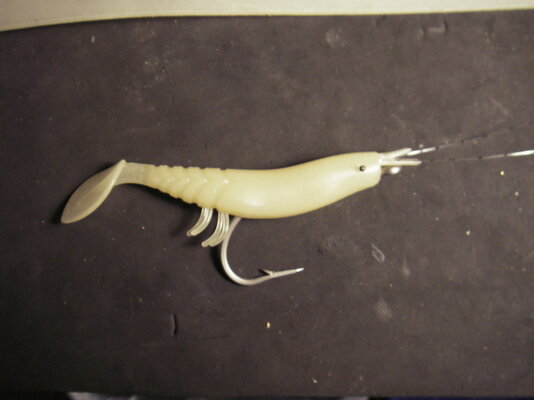One can never say for sure exactly why a fish did or did not strike,
and
It's easy to falsely assign certain causes to certain effects
Anglers that have done well catching fish using certain lures in certain colors may be prone to assigning reasons the combination worked. Anyone who caught fish on the exact same lure and color may assign different reasons the como did well. Fact is, neither can absolutely know for sure why fish struck. More and more,
why fish strike is controversial - sometimes to the extreme. Long-held beliefs are hard to change especially when they support fishing successes over many years. But when does cause & effect become irrefutable? When it comes to catching fish -
the simpler the correlation, the better!
It's one thing to buy lures based on someone's claim they catch fish in such and such a situation. The purchaser must catch fish with those lures to prove or disprove claims advertised in social media sources. Either way, it proves nothing as to why fish did or didn't strike but there are opportunities to disprove many of those claims and the fastest way is
lure craft. I have been making and modifying lures for over 20 years starting with skirted jigs and spinnerbaits for bass. The variables were: jig weight, skirt colors, trailer types and colors; spinnerbait skirt colors, blade size shape, number and painted (colors) or unpainted (silver or brass).
No one has ever claimed that any combination of the above is crucial to catching fish. Goes to show you, details don't seem to matter to those that simplify the use of certain colors while ignoring lure action, vibration, flash, drop rate, etc. They matter!!! I found that out the first year using different combinations regarding jigs and spinnerbaits. Fact is, color was the
least important variable.
Now we come to the present (last 8 years) of soft plastic lure creation and catching fish on them. Combinations of elements as with jigs and spinnerbaits matter ALWAYS! They are:
size, action, shape with color a personal preference based on fish caught consistently. The first three variables matter most - ALWAYS! As a soft plastic modifier, I am like the mad scientist in his lab coming up with more discoveries that might catch fish. Add a different tail to a different body and fireworks go off when the combination seems just right to provoke that poor, dumb, susceptible creature with gills & fins. Note: I've underlined the
action variable because it depends on size and shape.
Lures must exhibit certain actions supported by size and shape that provoke fish. Color in this instance, the
least important variable.
example: the Senko
1. certain diameter at the middle of the stick
2. tapered ends
3. certain material to add weight but not detract from lure softness and action
4. wacky rig the best presentation
Any lure ever made must follow the above rule or it is least likely to catch fish. Does color enhance those combinations? It's easy to prove colors work consistently by simply casting & catching. When I catch fish on 5 colors using a particular lure, I don't question the reason. It's good enough just to have caught fish on many occasions blindly using those color choices.
If I were to speculate why fish strike lures,
guesses would include:
1. live prey and lures each exhibit certain vibrations that fish sonar (lateral line) transmits to a fish's brain. The brain knows the difference between living and lively. Crawfish have parts that move subtly and a particular motion going from place to place. A jig & trailer has a skirt that pulsates and flairs along with a trailer that flaps. Fish know the former is edible; the latter a big question mark.
2. Fish (and yours truly) are generally inactive to conserve energy - naturally. To provoke a fish out of its stupor,
convenience must present itself in that fish don't have to travel too far to
sample the vittles. Does hunger have anything to do with it? Your
guess is as good as mine.
Proximity will always outweigh motive in my book along with
the characteristics of a moving object - living or not.
3. Fish aggression exists without rhyme or reason much of the time. It just is or not. Anglers can only hope that it is present when their lure hits the water.
Sorry for the long dissertation but I got time on my hands before going to my laboratory to invent more lures capable of catching huge or at least the most fish.







